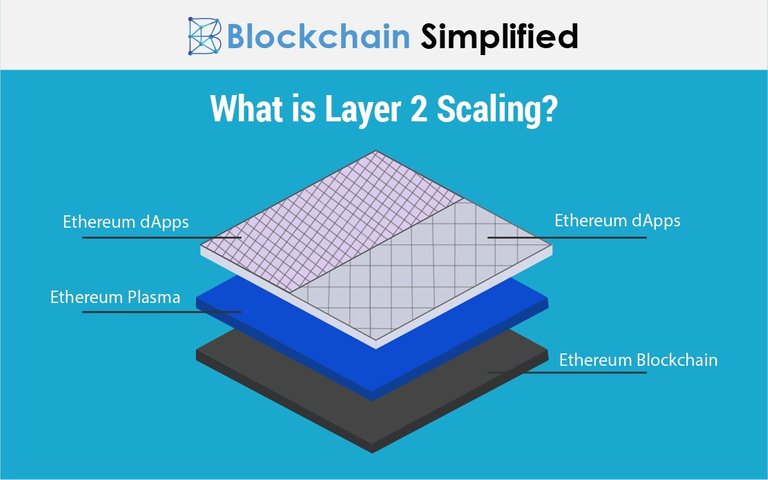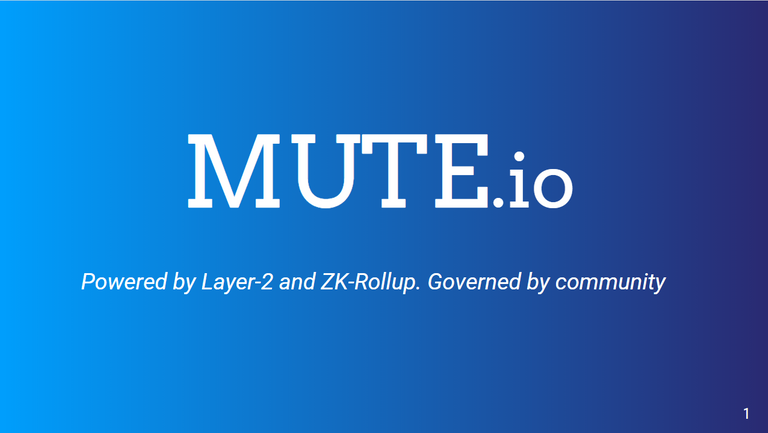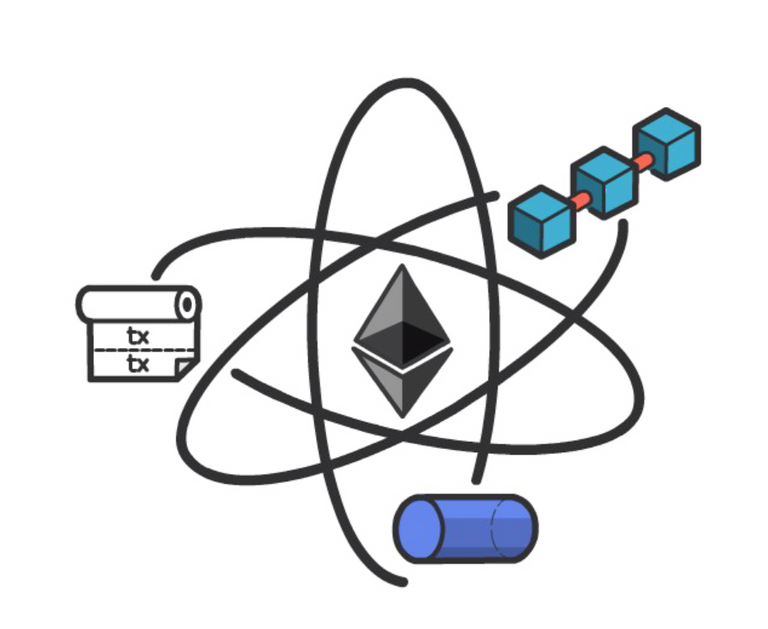Things are shaping up for Ethereum’s Layer-2 projects.
You’re probably too engrossed with ethereum the mainnet and cross-chains project and you easily get blown away by the plausible inventions in these two spaces. Yeah; that was me sometimes ago too. Cryptocurrency would probably be boring without ethereum, projects built on it and other projects ‘copying’ and improving its features. Smart contracts used to be the most fascinating thing about ethereum blockchain; currently, that wouldn’t make the top five list for most cryptocurrency enthusiasts.
Decentralized Artificial intelligence, decentralized Oracles, Gaming, NFT, DeFi; you’ll easily run out of air while trying to list solutions built on the ethereum blockchain. It is the influx of users struggling to experience and adopt these solutions that literally ‘crashed’ the ethereum blockchain. Yes, crashed in the real sense. Relative to its initial speed, blockchain size and transaction speed; Ethereum’s mainnet is literally ‘full’, according to a 2019 Bloomberg report. It’s hard to believe, but that report is true; just a bit exaggerated anyways.
Come what may, ethereum blockchain is very far from finished, Full or congested it still remains a trailblazing figure. A reputation set to outlive our expectations. Developers working on the ethereum 2.0 upgrade taunts near solutions, but Ethereum’s issues still holds it down currently. Cross chain projects have enjoyed so much attention and growth for the single fact that they forked the ethereum blockchain to offer certain features it lacks.
Couple of months ago, cross chain projects were the rave; Binance’s smart chain and Fantom’s opera chain conceived hundreds of projects built on a reportedly faster and cheaper blockchain. These cross chains were truly faster and cheaper. Personally; I have a little preference for Fantom’s opera chain, but that’s just some baseless sentiments. However; speed and cheapness aren’t enough to be an ‘ethereum killer’, hence, ethereum blockchain and the projects built on it continued to thrive amidst the proliferation of similar blockchains and clones of projects built on ethereum blockchain.
There are a number of reasons why these new alternatives failed to completely replace the ethereum and why they may never do so. If you’ve used any of these alternatives, you can easily name a number of reasons why the ‘ethereum killer’ paradigm hasn’t fared so well. Major reasons include:
Cross-chain instabilities
Cross-chains to an extent are still baby projects. Rapid growth and widespread adoption they have enjoyed creates the orientation of complete maturity. However, they are in fact, far from this – currently. Cross-chains’ growth has unfortunately been marred by numerous instabilities and irregularities. Some of these are toxic for not only the cross-chain ecosystem, but DeFi as a concept. Well; you’d argue, toxic behaviors are general and everything suffer from similar events; Cross-chains and mainnets alike.
However, many cross-chain platforms are technologically unstable. Unable to develop efficient infrastructures, users on these platforms are left to go through hurdles. You can easily share your cross-chain experience. Bridging across cross-chains is an idea which was introduced to simplify interoperability of these different ecosystems. Cross-chain projects are developing infrastructures to allow easy asset use across several ‘clones’ of the ethereum blockchain. Unfortunately, these infrastructures despite being brilliant hasn’t really reached a good level of efficiency and are still far from fully optimized.
Struggle for true decentralization
Binance’s smart chain was dubbed ‘centralized’, an issue that hasn’t been addressed properly; in my opinion. With just a handful of validators, many cross-chain projects are far from centralized and many miles away from creating a stable and truly decentralized ecosystem. A blockchain with only a few validators doesn’t spell good for the security of its users and stability of its network. These cross-chain projects understand this and are continuously working towards improving this situation; a commendable effort, to be fair.
While this effort is still ongoing, many cross-chains are still far from complete decentralization and stability. Some projects’ solution to this includes creating multiple validator nodes managed by the project itself. But this doesn’t remedy the situation, it rather worsens it and looks bad for their reputation.
Reluctance of existing projects to migrate to new chains
Despite the rave of cross-chains and ‘ethereum killer(s)’, many projects which first launched on the ethereum blockchain are yet to bridge over to alternative solutions. A couple of other projects which have done this still spend majority of their human and material resources developing their applications on the ethereum blockchain. Cross-chain projects are yet to perfect the act of building clones of these projects on their own chain and only struggle to build relatively inferior clones which hardly satisfy the cravings of their users.
Ethereum maximalist orientation
I have a special reservation for the ethereum blockchain. Nevertheless, I still use cross-chains a lot, actually they are brilliant concepts. But in contrast, many other investors think otherwise. ‘Ethereum or nothing’! just like bitcoin maximalists, ethereum is home to a good number of strict believers. Moving over to anything similar or different is a simple ‘NO’ for them. Bitcoin, cross-chains and other mainnets different from ethereum is a joke to them. It’s understandable why they took this stand.
For people like this, cross-chains are simply non-existent. They will enthusiastically use products built anywhere on ethereum blockchain, including the testnets! Apart from this, it’s no deal.
Cross-chains are brilliant, but due to the issues mentioned above (and a couple more in your mind), they are far from being the true solutions. They get it right in areas where ethereum failed and unfortunately fail in areas where ethereum succeeds. Two contrasting worlds, one built from the other.
While this continues, Mute is building a complete DeFi solution on Ethereum’s second layer. Ethereum’s second layer is a flexible platform with incredible efficiency features optimized to work at the peak of its excellence. Layer-2 comprises of a collection of infrastructures designed to take the bulk of your activities on the ethereum blockchain away from the main net. Moving away from the main net and utilizing scalability infrastructures gives projects built on layer-2 certain clear-cut advantages.

These projects still benefit from the strengths of ethereum mainnet making up a ‘perfect match’. Enterprise solutions are already being built on the layer-2 as brilliant projects are fast taking advantage of the benefits it offers.
Mute is building a proper DeFi platform on Ethereum’s layer-2 – the first of its kind. To further enhance efficiency; it is leveraging the extremely powerful Zero Knowledge (ZK) Rollup protocol to process transactions faster and with added security.
ZK-Rollups play the ‘exit game’ ingeniously and perfects the shift from Ethereum’s congested layer-1 while ensuring better functionality than the closely related ‘optimistic rollups’. Mute puts the best tools together and adds more to this through its own uniquely crafted solutions such as a special privacy layer which conceals transactions on its DeFi platform – Mute switch.

Mute Switch also features a secure personal wallet built on Layer-2. Mute’s layer-2 wallet enables relatively feeless transfer of funds, from Mute Switch to other ethereum addresses; with more developments coming up, this feature is poised to serve even more use! Mute Switch wallet’s enable efficient payments powered by ZK-Rollups and built on a more flexible blockchain layer.
Ethereum mainnet continue to suffer from its long-lasting problems, cross-chain solutions are yet to stir free from their biggest problems. Layer-2 projects are positioned for a dramatic ascension. Just like the cross-chain wave, Layer-2 projects are set to take the space by the wind. In contrast to cross-chains, layer-2 projects flaunt a ‘near perfect’ back-end.
Its shaping up perfectly; for the layer-2 ecosystem. It currently enjoys little attention, but with a whole lot going on it its space, it’s only a matter of ‘when’ before it becomes the rave. And when is ‘SOON’.
Would you love to read similar articles?
Follow us on Twitter
Follow us on Medium
Follow us on Publish0x
Posted Using LeoFinance Beta

Interesting article, I'm inclined to agree that once the dust has settled and we have ETH 2.0 a lot of capital will just fly back into ETH - I've been looking at Matic and ATOM recently and I just can't see anything saying 'buy me' - ETH on the other hand is what I've been steadily accumulating and staking on these other DEFi platforms.
Mute looks interesting!
Posted Using LeoFinance Beta
Mute is cool, very cool! currently, most crypto projects doesn't look shinny, price-wise, but its the best time to really hit the markets.
Wait till September when Cardano's smart contracts roll out and you'll see a real "Ethereum killer" starting to grow up.
Elrond is adding smart contract features too, Theta's smart contract has been around for a while. Ethereum will outlive our expectations. I'm looking forward to cardano though!
Congratulations @joelagbo! You have completed the following achievement on the Hive blockchain and have been rewarded with new badge(s) :
Your next target is to reach 120000 upvotes.
You can view your badges on your board and compare yourself to others in the Ranking
If you no longer want to receive notifications, reply to this comment with the word
STOPCheck out the last post from @hivebuzz: